Chabówka 2022-01-13
Steam locomotive Tr12-25.
The steam locomotive with the Polish designation Tr12 is a locomotive developed in Austria. Its prototype was the type 170 locomotive. The axis system of the Tr12 locomotive is 1'D or otherwise 1-4-0 (oOOOO), and the Polish designation is a small letter "r". This axle system also includes the following steam locomotives: Tr21, Tr202, Tr203, which were also operated by the Polish State Railways and were treated as locomotives for freight trains.
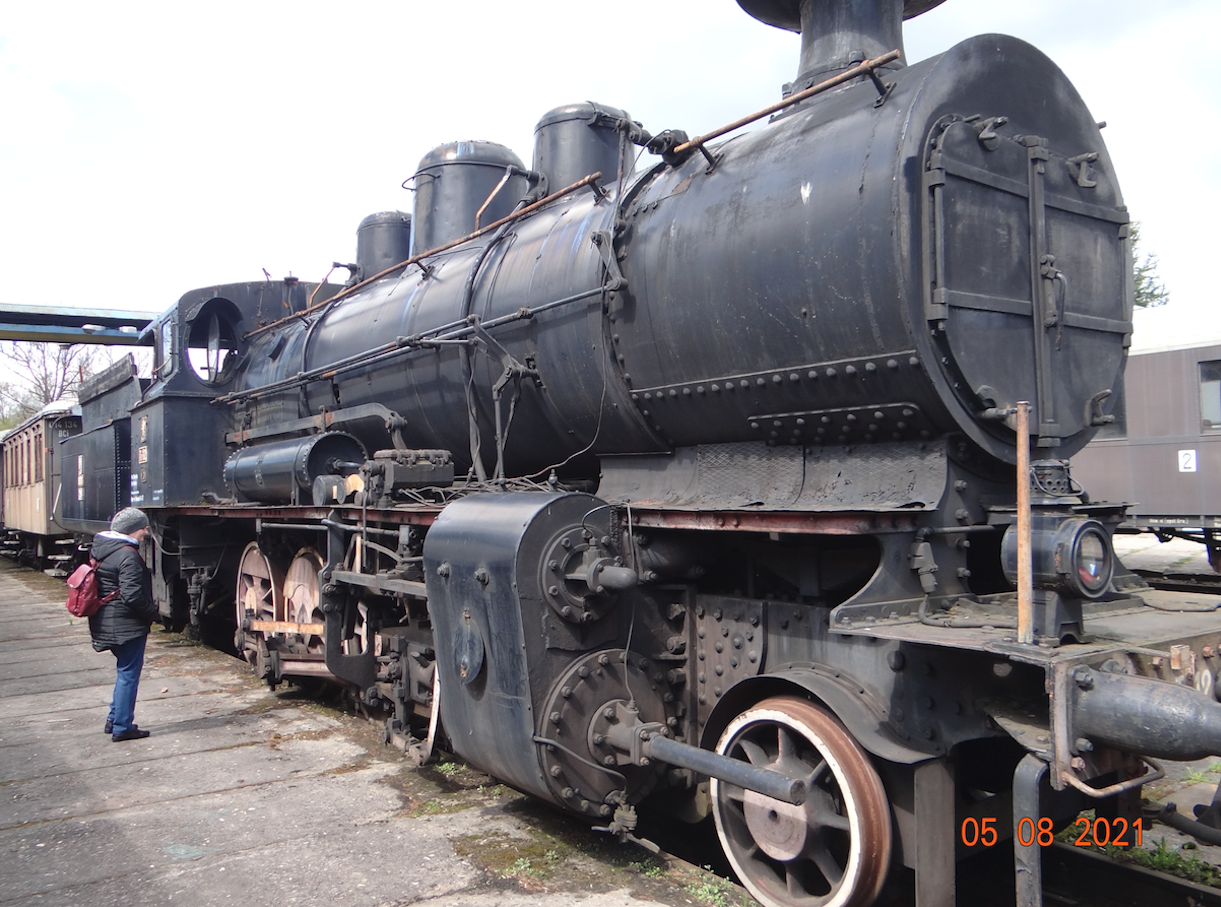
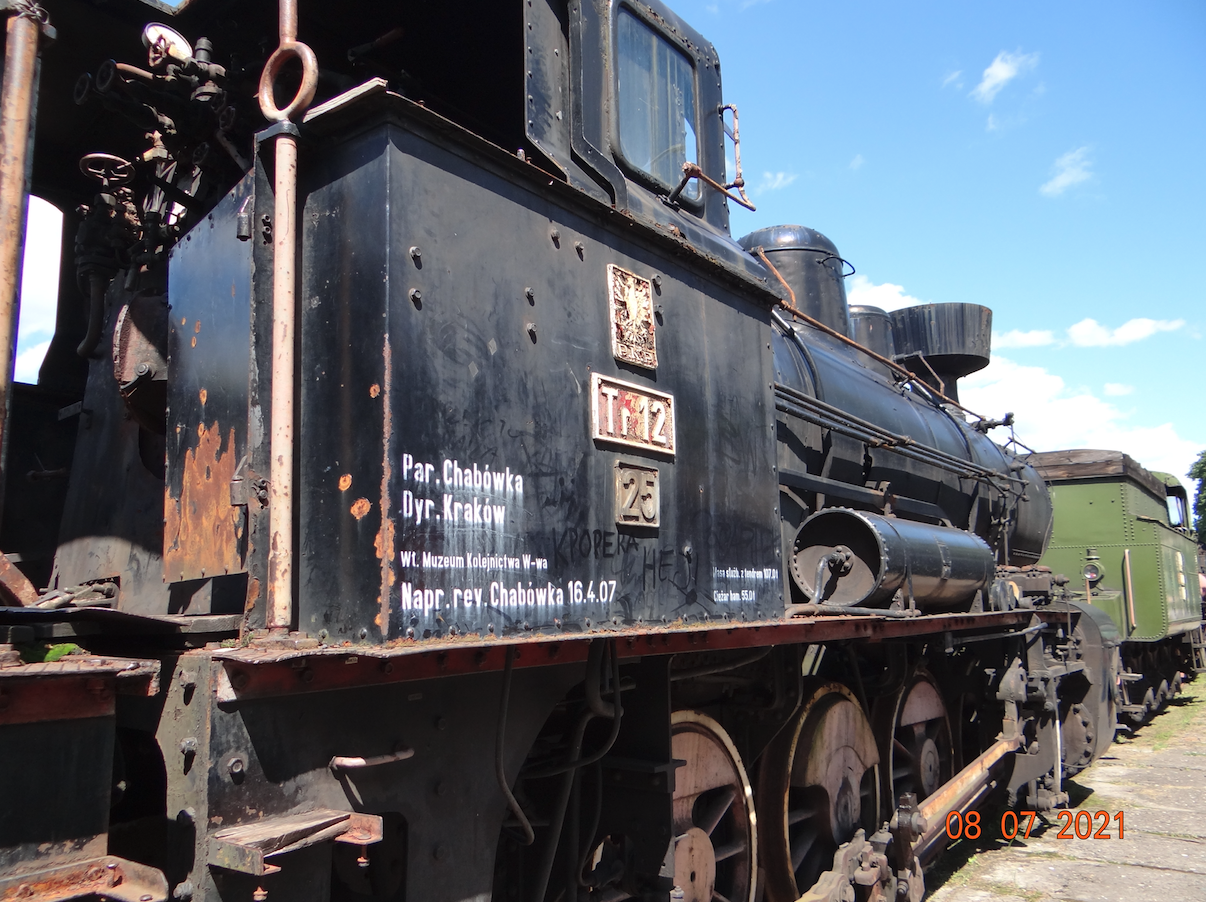
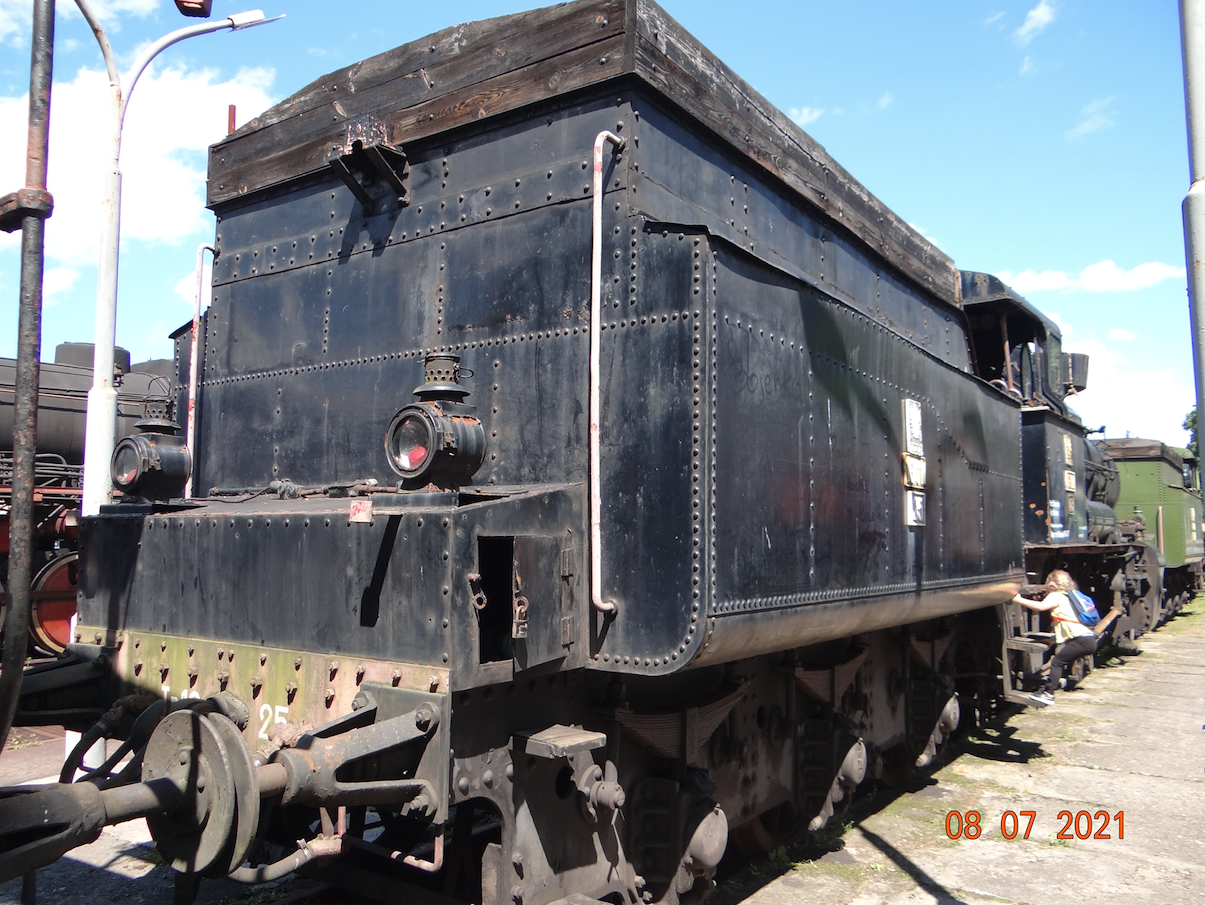
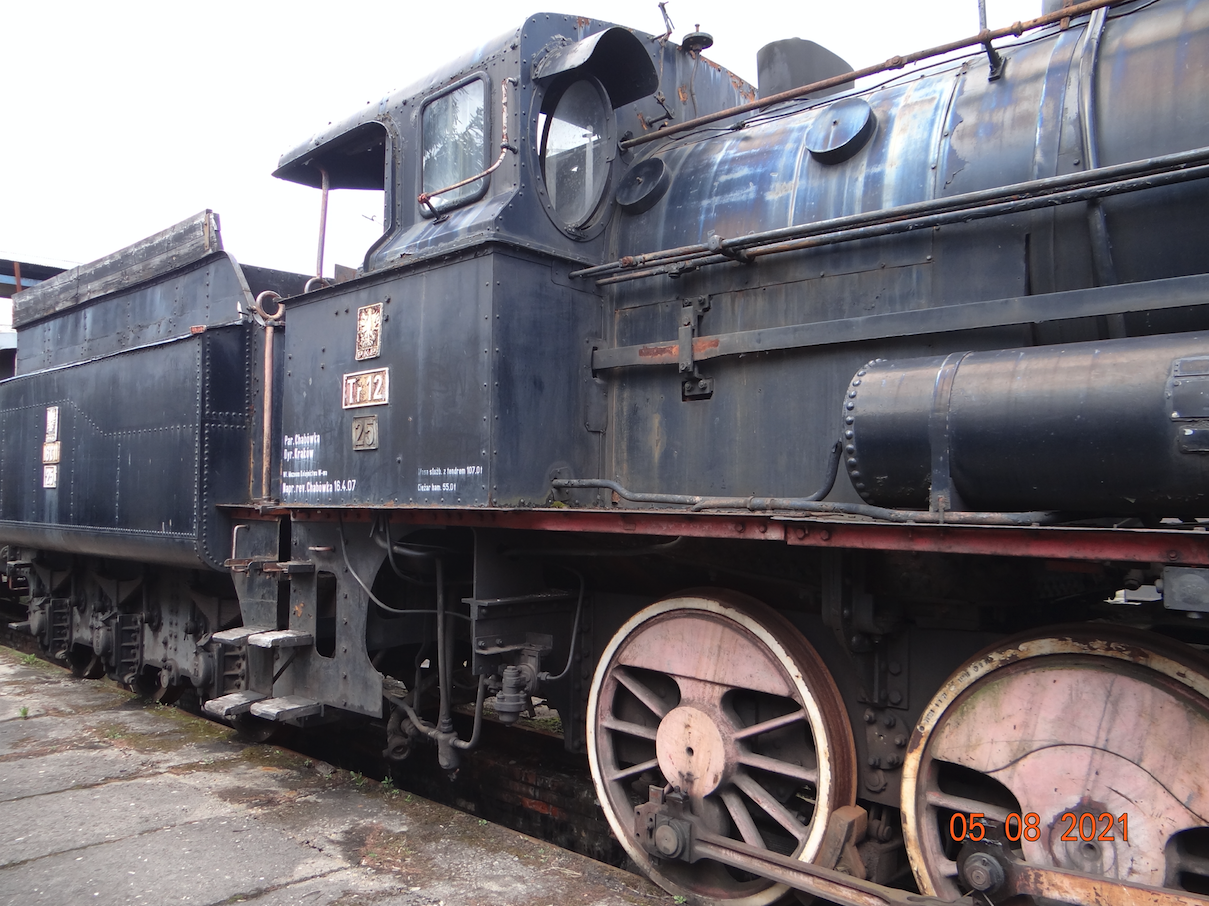
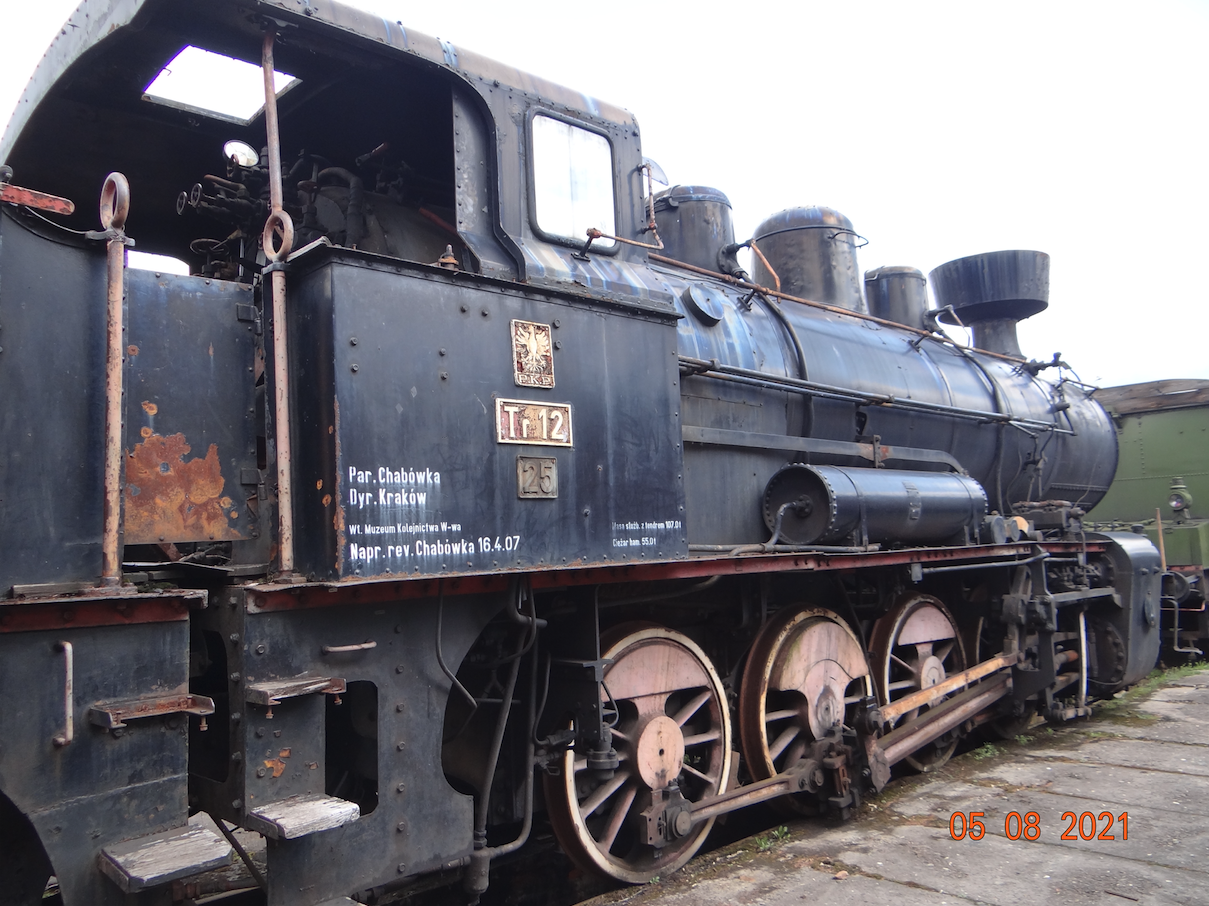

After the Great War, Tr12 locomotives were still produced for Yugoslavia, Czechoslovakia and Poland. Zakłady Parowóz in Warsaw assembled steam locomotives of this series and repaired them.
Structurally, the Tr11 / Tr12 locomotive was designed for difficult mountain routes, including the Vienna - Innsbruck - Zürich route. The designers started from the design of the Series 60 steam locomotives, which had a typical 1'C (1-3-0) axle arrangement. Another drive axle has been added to the new locomotive to increase traction. This was done by lengthening the refuges. The main designer was the engineer Karl Gölsdorf (1861-1916). Karl Gölsdorf graduated from the Technical University of Vienna and worked in the machinery factory of the State Railways. In 1891, he became a railroad clerk and worked in the Ministry of Railways until his death. Karl Gölsdorf is the author of several innovative design solutions used in steam locomotives and warships. In 1895, an engineer built a high-speed locomotive that reached a top speed of 110 km / h.
The first two locomotives of the 170 series, numbered 17001 and 17002, were tested in 1897. The tests were positive. Mass production started, but it was small. It was only in the face of the tense political situation that the production rate was increased in 1913. At the same time, the saturated steam boiler was replaced with a boiler with a dry steam superheater. This is how the 270 series was created.
The manufacturer of the 270 series locomotives was the Floridsdorf factory in Vienna (Austria) and the plants in Warsaw. The Tr12 locomotives were built in the period 1920 - 1927. Compared to the predecessor of the 170 series, the 270 series locomotive received a steam superheater, which increased the efficiency of the locomotive. The series 170 locomotive in Poland was called Tr11. This locomotive was produced from 1897. The superheater version was developed in 1917, during the Great World War. After the World War II, the new 270 series locomotives were delivered to the railways of Austria, Czechoslovakia, Romania, Yugoslavia and Poland. PKP received 142 Tr12 locomotives, 60 of which were built at the Warsaw Joint Stock Company. In 1926, 115 Tr12s were in service at the Polish State Railways.
The Tr12 locomotive had good traction properties. It hauled trains weighing up to 1,300 tons at a speed of 50 km / h, and trains weighing 840 tons at a speed of 60 km / h. The locomotive performed well on mountain routes, and the train, weighing 150 tons, pulled at a constant speed of 40 km / h.
Tr12-25 steam locomotive.
The Tr12-25 steam locomotive was produced in 1921 and received the designation Tr12-58. After the invasion of Poland by Germany and Russia in 1939, the locomotive was taken over by the German railroad. The Germans marked the locomotive with the number 56 3522. After the Second World War, the locomotive returned to work in the Polish State Railways and received a new number Tr12-25. From 1966, the locomotive worked in the Kraków locomotive depot. The steam locomotive was removed from the state in 1970. In 1975, the locomotive was entered into the status of the Railway Museum in Warsaw. In 1993, it was rebuilt at the ZNTK in Piła and was transferred to the Chabówka open-air museum. The Tr12-25 steam locomotive is currently the only surviving vehicle of the 270 series in Poland and is located in the Chabówka open-air museum.
T-T data of the Tr12 steam locomotive:
Length 11.00 m. Height 4.57 m. Boiler pressure 13 at. The heating area of the boiler is 168.7 m2. The superheater area is 43 m2. Grate area of 3.87 m2. The diameter of the driving wheels is 1.26 m. The diameter of the running wheels is 0.97 m. The service weight of the locomotive is 68,000 kg. Service weight with tender 107 800 kg. Design speed 60 km / h. Tender series 16C11. Water supply 16 m3. Coal stock 6,800 kg. Total length with a tender of 17.34 m.
Written by Karol Placha Hetman
